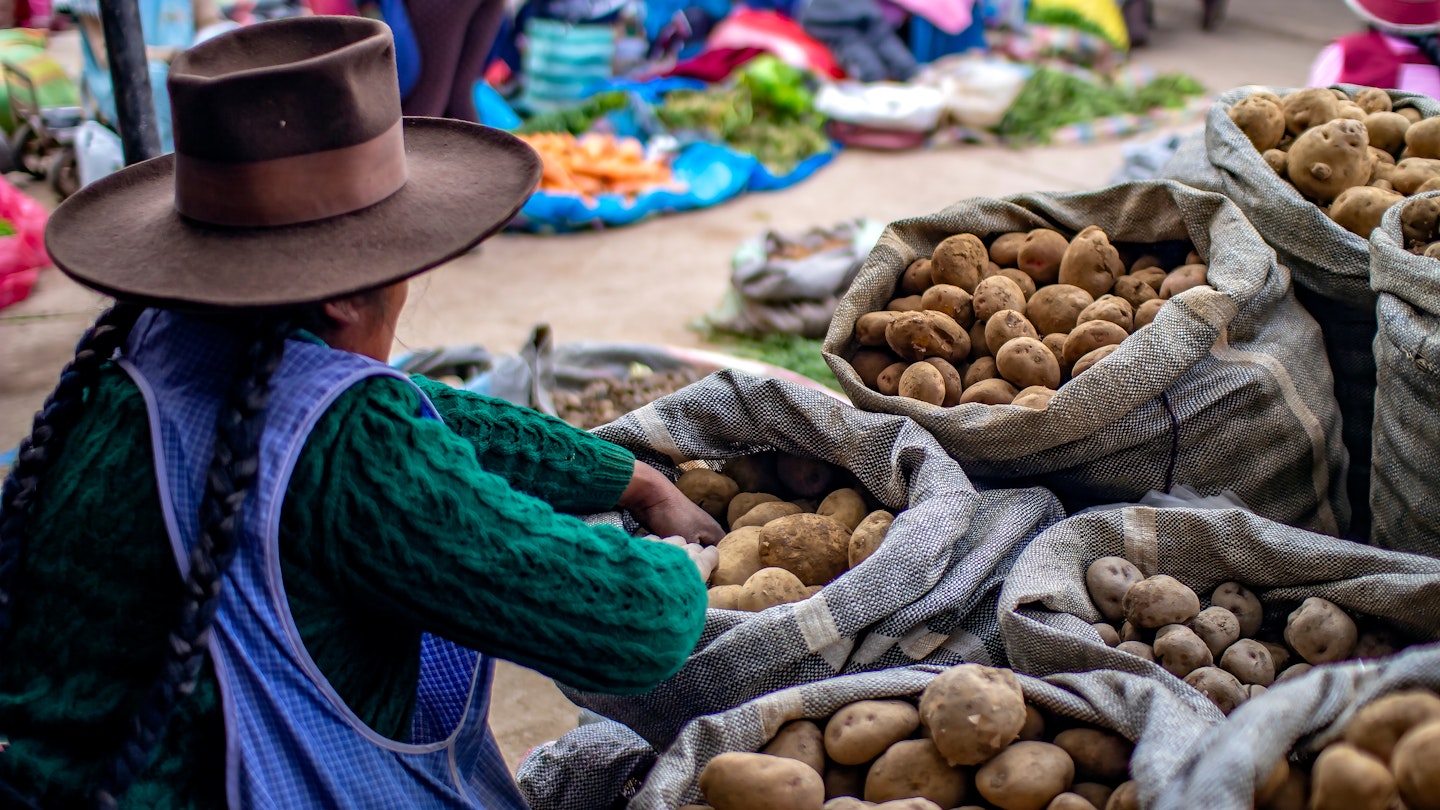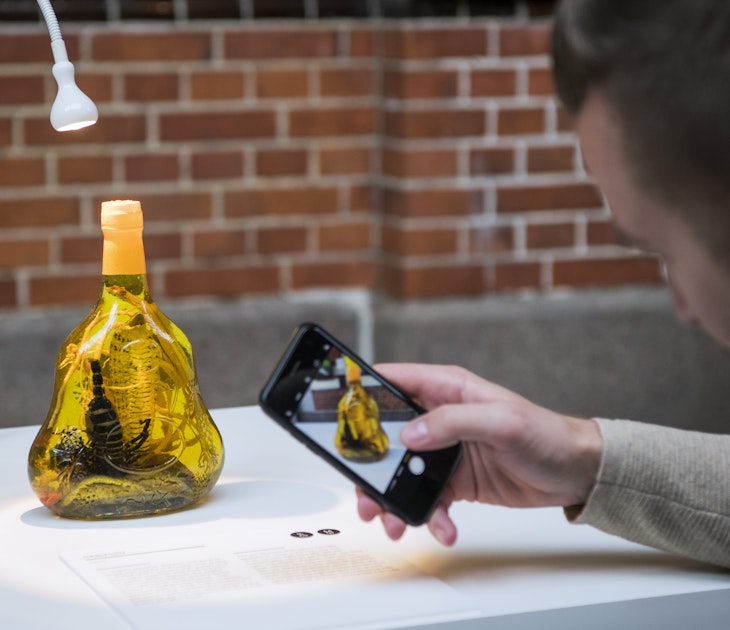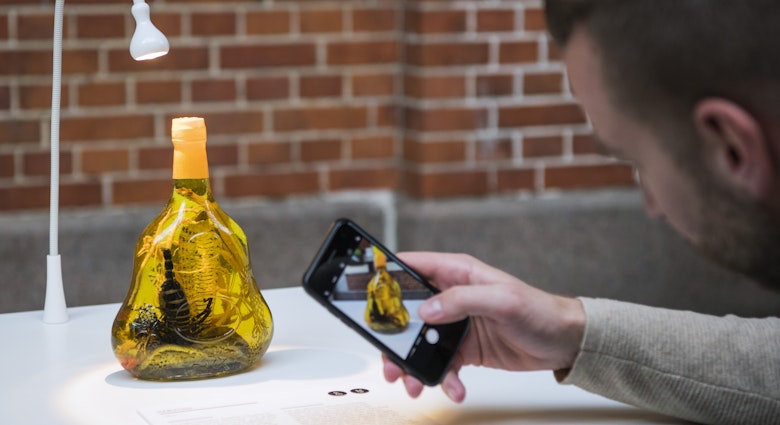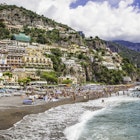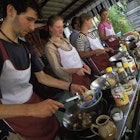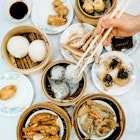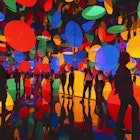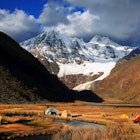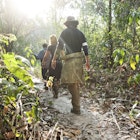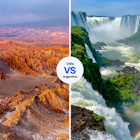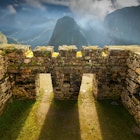Hugging the Andes mountains, Southern Peru continues to celebrate its age-old customs and traditions. Cities like Cusco, Puno and Arequipa proudly preserve ancient festivals and culinary techniques (think masked paraders paying homage to the Sun God and ceramic pots stacked on wood-fired ovens), making each an extraordinary destination for travelers craving authentic experiences.
While Inca heritage, mystical landscapes and high-altitude crops link these three cities, each also has a unique flavor and spirit. Follow along on this cultural and gastronomic tour of Southern Peru, starting in Cusco, the ancient capital of the Inca Empire, then on to Puno on the shores of Lake Titicaca, and ultimately making our way to the White City of Arequipa.
Editor’s note: This itinerary covers high-altitude areas of Peru. If possible, before you start this itinerary, it is advisable to spend time in lower altitude parts of the region and acclimatize before exploring the higher elevations in Cusco.
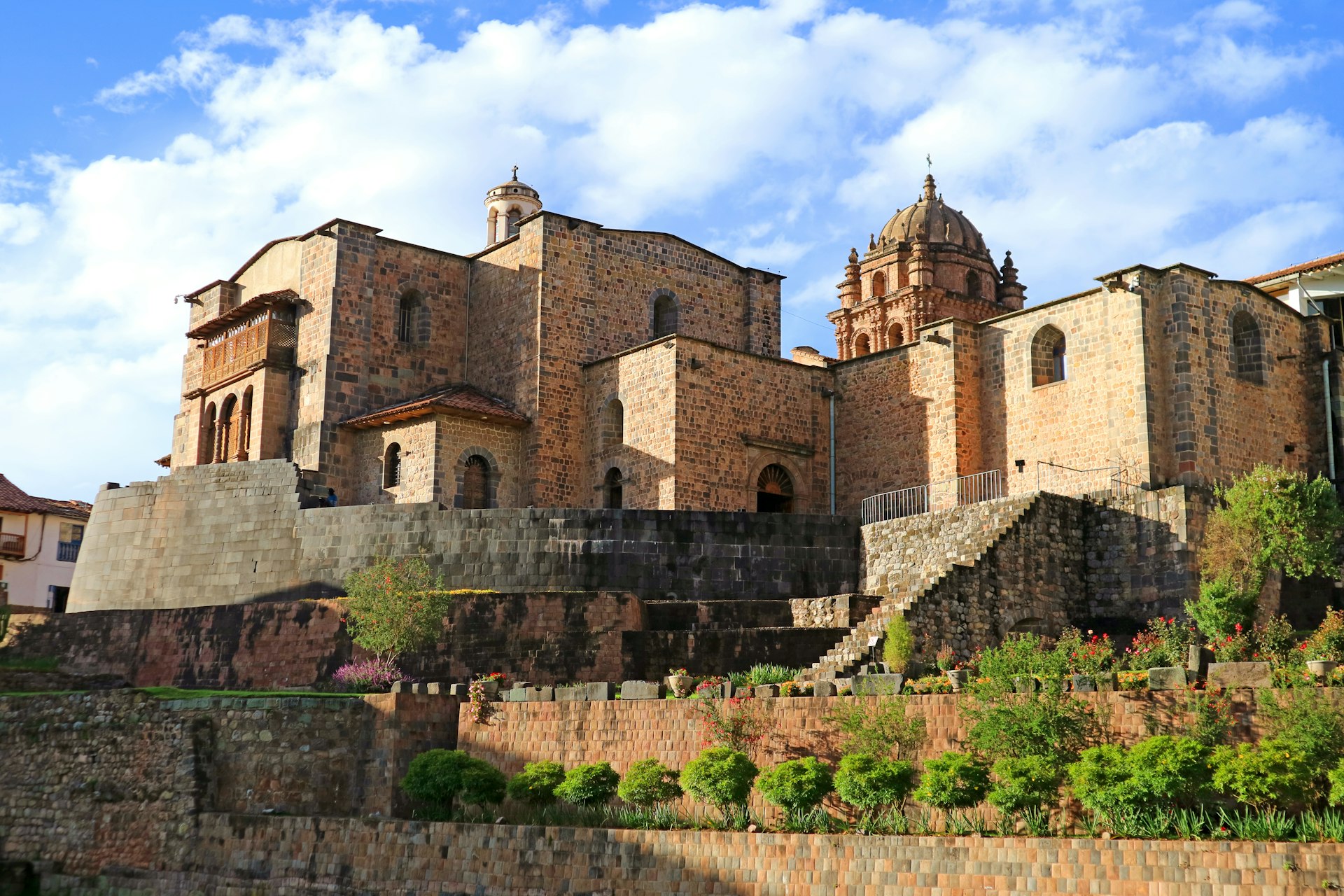
Cusco: the Inca Empire, preserved
Strolling the narrow streets of Cusco, travelers are often taken aback by the stellar show of colonial architecture that abounds in the high-altitude (3400m) city and former capital of the ancient Inca Empire. Here Inca constructions, usurped by the Spaniards in the 16th century, are literally the sturdy foundation for places like the Archbishop’s Palace (originally the residence of Inca Roca and home to the famous twelve-angle stone) and the Santo Domingo monastery (which sits atop the sacred Inca temple, Qoricancha).
Add to your walking tour the archaeological park Sacsayhuaman and imagining Cusco as the imperial city it once was becomes effortless. This immense site of both religious and military significance is the most impressive in the immediate area around Cusco.

While the advanced architectural engineering of the Inca has stood the test of time, so too have some of the empire’s grandest cultural festivals. Inti Raymi is the annual Sun Festival held each June – in time with the winter solstice – to pay homage to the Sun god, Inti. Established by Inca Pachacutec around 1430 AD, Inti Raymi draws crowds from all over Peru, as well as performers who recreate the festivities of dance and music.
One highlight of Cusco’s Inti Raymi festival is the timeless dish called chiri uchu – a sampler of Andean delicacies including potatoes, corn fritters, guinea pig and dried alpaca meat. Chiri uchu is a dualistic name that literally translates to ‘cold chili pepper,’ because it is served cold in honor of the hot sun. It’s most often washed down with a glass of chicha de jora, a fermented corn beverage prized by the Incas and continues to be a staple in local culture.
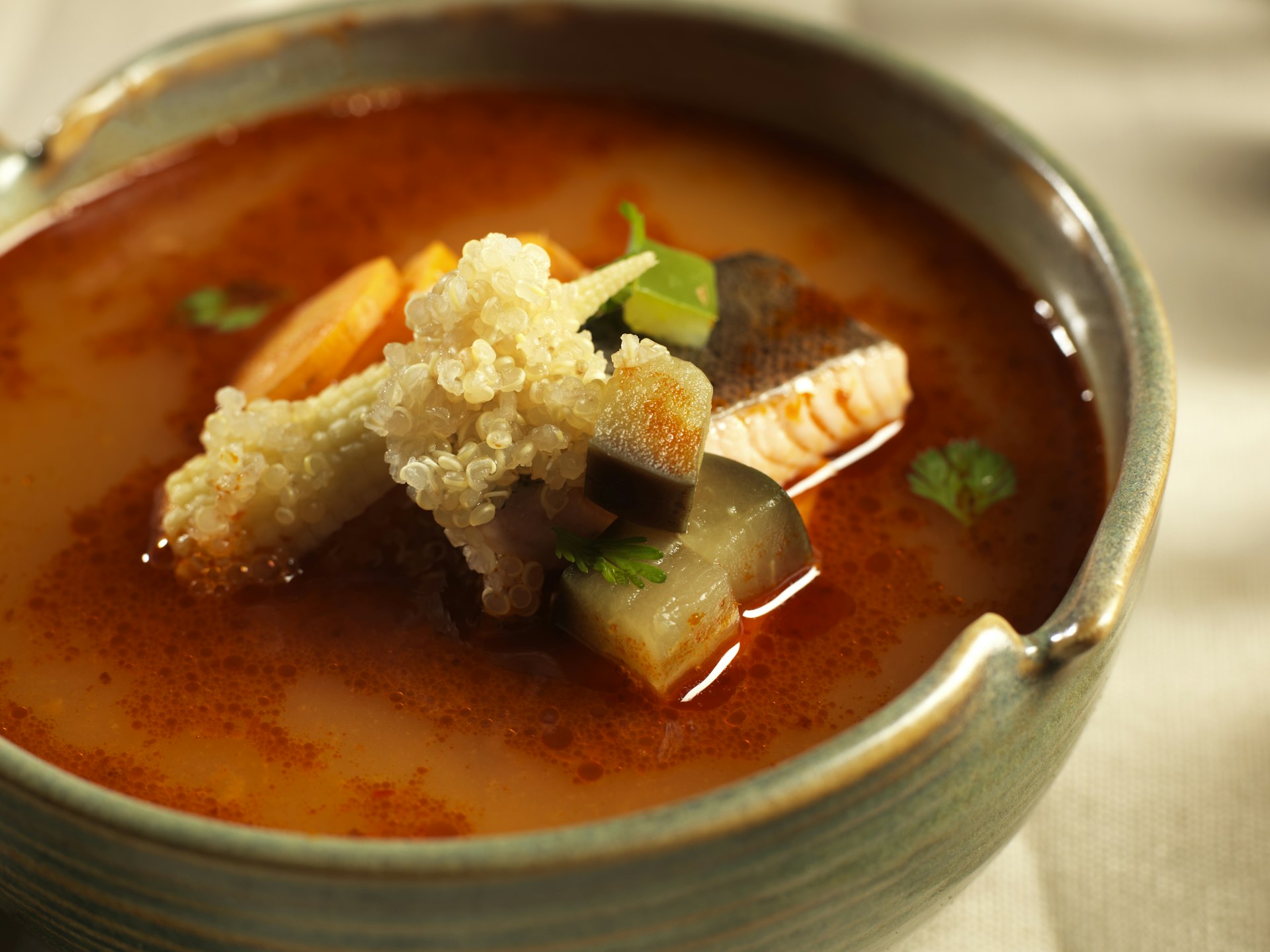
Many locals of the Cusco highlands stick to the Andean diet which is rich in plant-based protein thanks to the nutritious native crops cultivated in this fertile region. Don’t miss out on choclo con queso (large kerneled corn served with a slab of salty cheese), quinoa soup, or the freeze-dried potato, moraya, dipped in the spicy uchucuta sauce.

Puno and Lake Titicaca: folklore and flavor
According to one of the great chroniclers of the 16th century, Inca Garcilaso de la Vega, the Inca origin story begins in Puno’s Lake Titicaca – at 3,800m the highest navigable lake in the world. From here emerged Manco Capac and Mama Ocllo, children of the Sun God Inti, to bring together a chaotic Andean society and ultimately establish an empire. Whether it’s historical fiction or complete fantasy, the legend only adds to the mystical experience of floating across Lake Titicaca and encountering the Andean communities who call it home.
A full-day boat tour of Lake Titicaca begins with a visit to the centuries-old Uros Islands, constructed out of totora reed by Uros-Aymara families. These artificial islands are a joy to explore, as locals share their craftsmanship by creating brightly colored canoe-style boats and more out of the same aquatic bulrush.

Leaving behind Puno and the popular Uros Islands and getting off the beaten path, head to Taquile Island. Home to just a few thousand Quechua-speaking inhabitants and a handful of impressive Inca and pre-Inca sites, the traditional Taquile Island is well worth a longer visit. After a lunch of fried trout caught directly from the lake, or a creamy bowl of pesque de quinoa, get to know the local knitters and weavers who are traditionally male – out of the ordinary for Peru. The slow-living lifestyle embodied by Taquileños will stay with you long beyond the perfect sunset send-off you’ll get as you return to the shoreline of Puno.
Each February, the southern city earns its nickname as the Folkloric Capital of Peru with the raucous, two-week Virgen de la Candelaria festival. A melding of Catholic faith and Andean worldview, Puno’s patron saint is honored by numerous processions and a dance competition that draws thousands of immaculately-costumed performers from all over Peru. Make sure to sample chaulla thimpo, the Quechua name for an ancestral fish and potato stew.
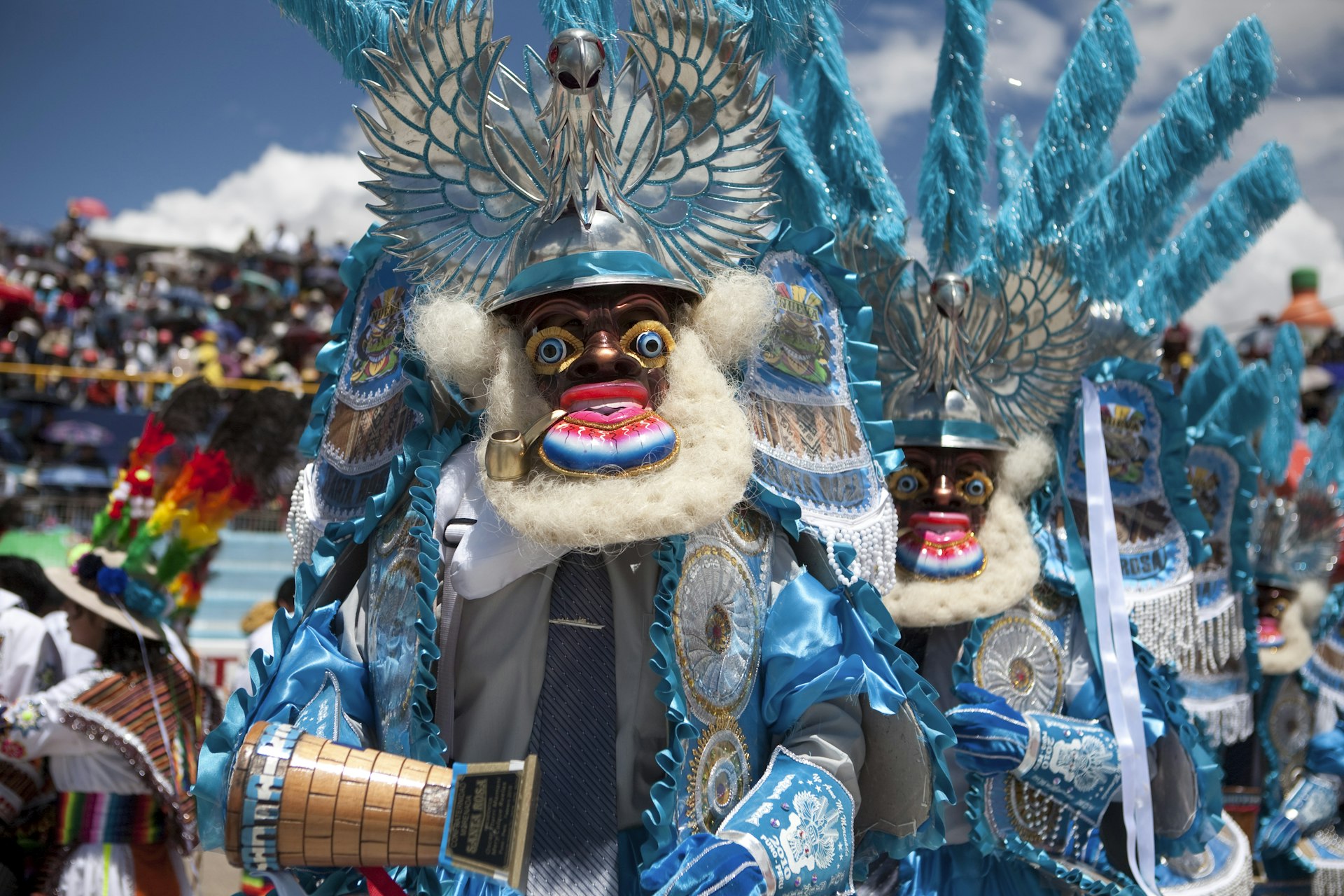
Arequipa: hearty dishes and colorful history in the White City
Arequipa is known as the White City due to its stunning architecture made of sillar, a chalky volcanic rock. But this vibrant southern city also offers countless historical and cultural explorations. Meander through the historic city center, recognized as a UNESCO World Heritage Site, and you’ll find the imposing Basilica Cathedral, one of the most impressive and unique colonial churches in Peru. Just blocks away and painted in rich primary tones is the 16th century Monasterio de Santa Catalina, with its large complex of rooms, courtyards, cloisters and more.
Head northwest towards the Grau bridge and the outline of Misti volcano will come into view. This active stratovolcano sits less than 20km from the city, luring adventure travelers to hike to its 5,820m summit. If ascending a lava-filled mountain doesn’t suit your active appetite, head instead for Colca Canyon. Twice as deep as the Grand Canyon, Colca is a four-hour car ride from Arequipa’s center and travelers typically split the trek into a two-day trip. This arid destination is also your best bet for observing the majestic Andean condor in flight.
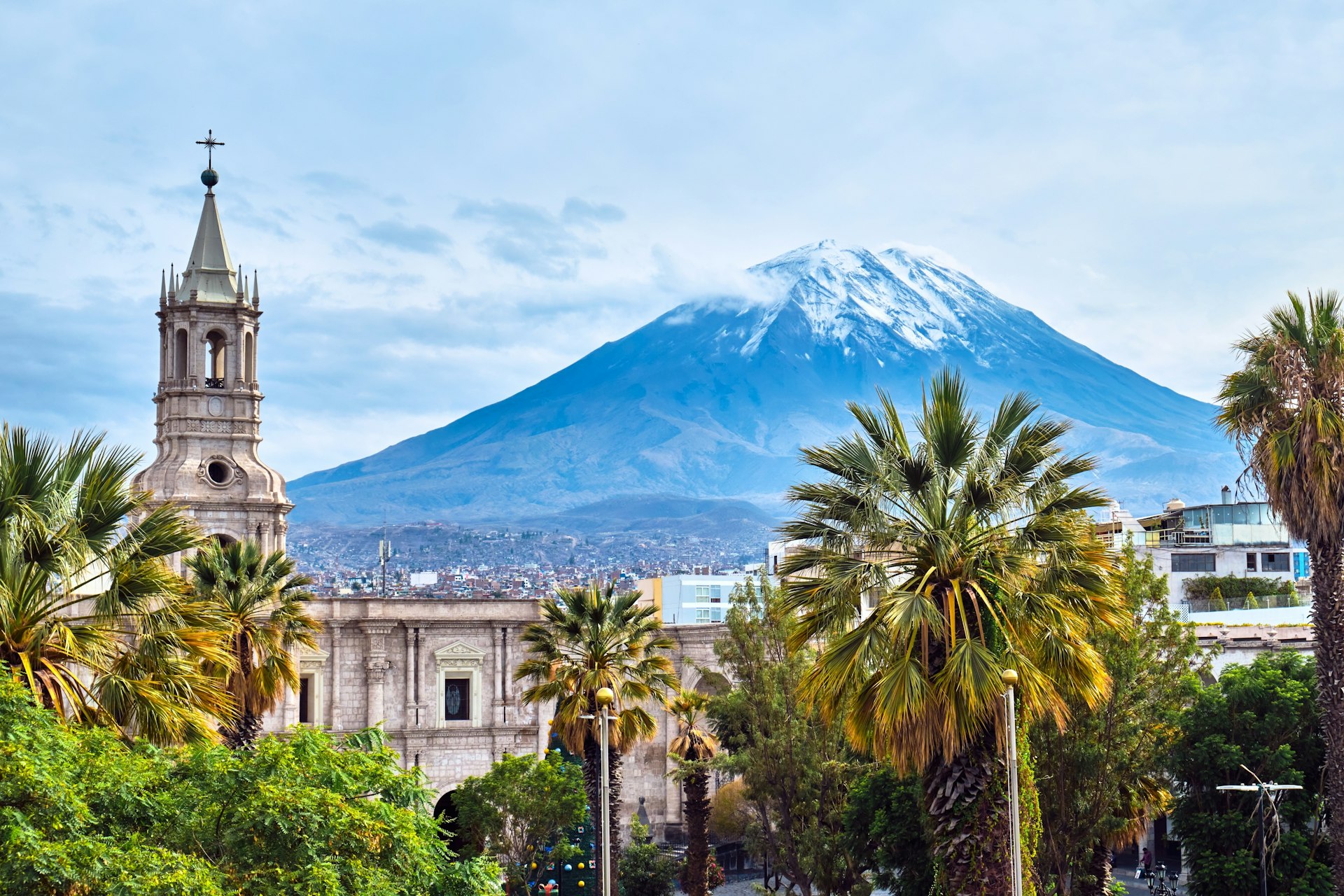
Whether you stick to city tours or pump up the adrenaline with outdoor adventures, a visit to Arequipa will stoke your appetite. Arequipa’s gastronomic style differs from those of Cusco and Puno, so walk into a picanteria (a traditional, family-run lunchtime restaurant) and choose from the rich, hearty and generously-portioned dishes. Iconic side dishes or starters include rocoto relleno (a spicy pepper stuffed with ground beef and topped with cheese) and pastel de papa (a lasagna-like layering of white potato, cheese and egg).
Shrimp chowder, chupe de camarrones, is a favorite among Arequipeños (the city is less than 100km from the Pacific coast), but the local flavor and pride is truly captured in the White City’s version of adobo. Made in a traditional clay pot, pork is slowly simmered in the fermented corn drink chicha de jora until tender, then cooked with vinegar and a handful of Peruvian herbs and spices. Want to enjoy Arequipa-style adobo like a local? Head to a neighborhood picanteria early and slurp the stew down for breakfast – the perfect way to reflect on all the tradition, culture and culinary history of Southern Peru.
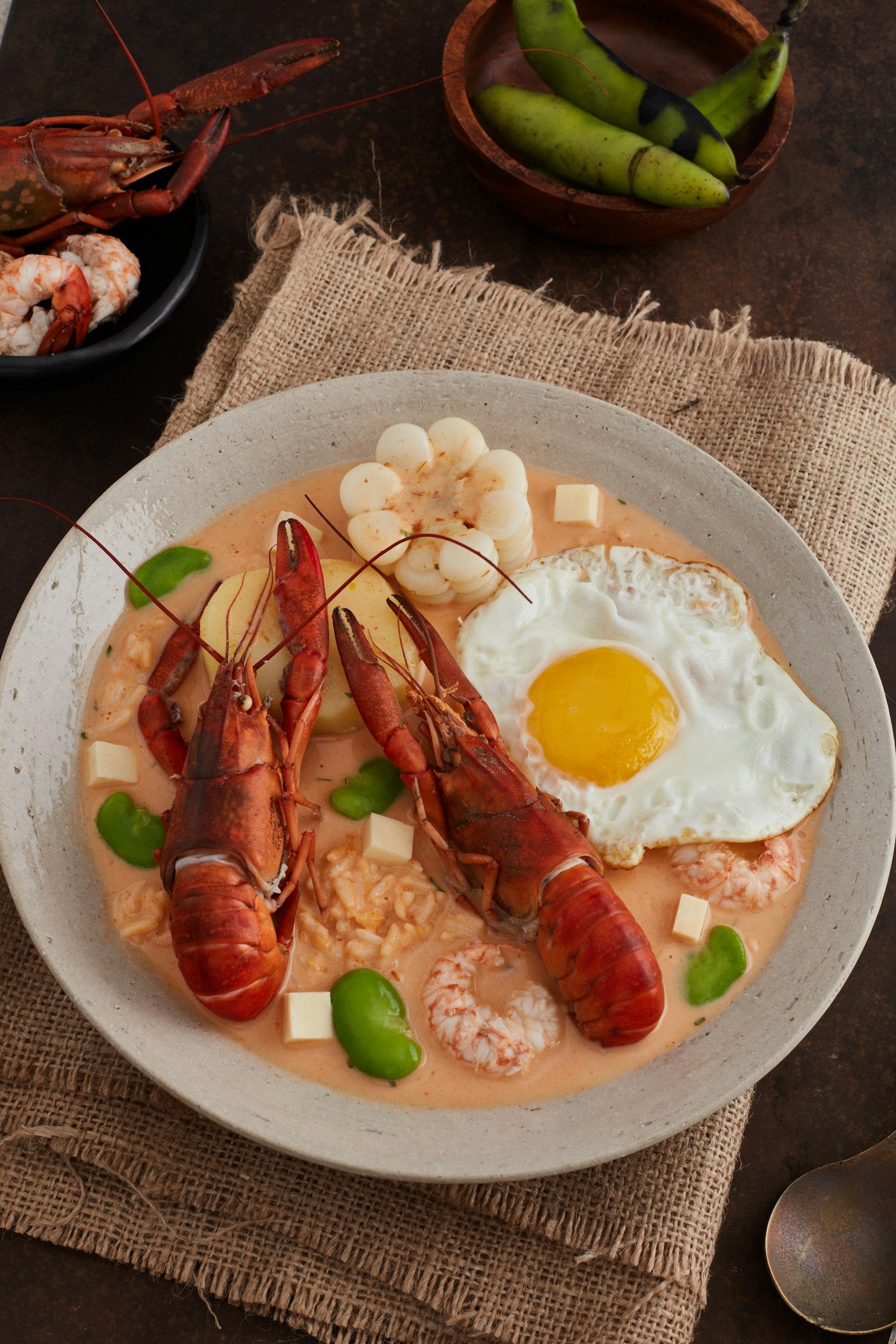
If you’re ready to keep exploring, Southern Peru has plenty more unique experiences and amazing food to discover. Consider hiring convenient tourist services in any of these three cities to make the most of your experience.

